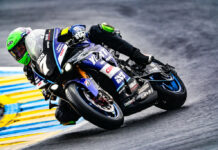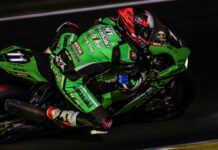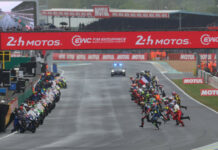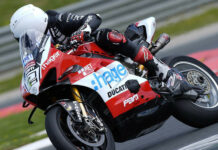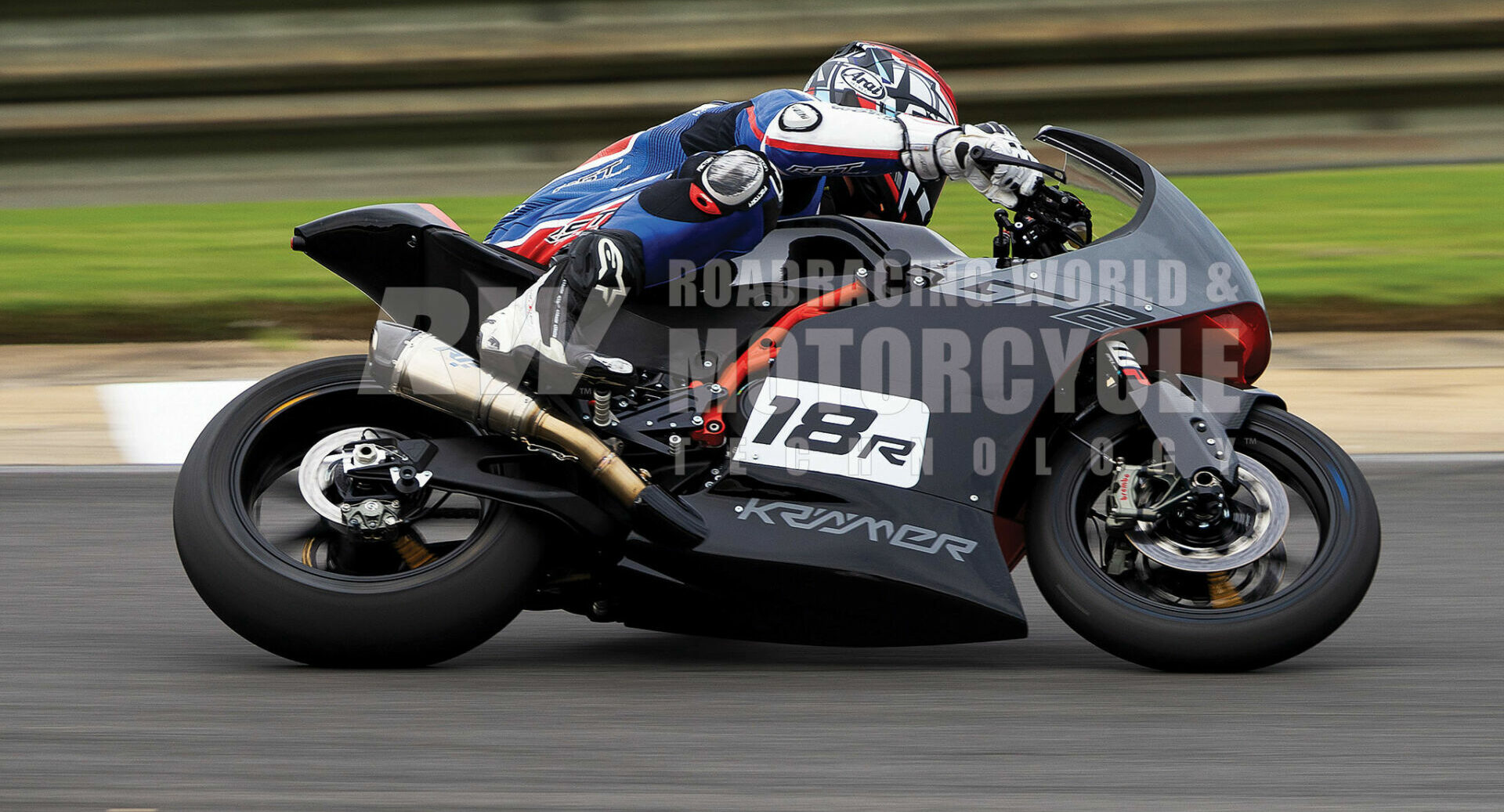Editorial Note: The following feature appears in the November 2023 issue of Roadracing World & Motorcycle Technology magazine.
TRACK TEST: KRAMER GP2-890RR
138 Horsepower & 313 Pounds In A Great Chassis = Big Fun!
By Chris Ulrich
The KTM RC 8C took Kramer from a niche brand and thrust it into the spotlight. Now, after its second run of the KTM RC 8C model, Kramer has launched its own version combining an 889cc KTM engine with its signature chromoly trellis chassis to create the GP2-890RR, except with more power, a tunable ECU, and no wings. Now closing on its 10th year of operation, Kramer Motorcycles is hitting its stride. The company recently broke ground on a new factory in Burghausen, Germany and has been pumping out a steady stream of high-performance single-cylinder and twin-cylinder track-ready racebikes. The Kramer brand’s popularity showed at the recent AHRMA Barber Vintage festival, where there were 22 riders racing Kramer. That breaks down to 14 of the 690cc single-cylinder EVO2 690 bikes, six GP2-890R bikes, and two GP2-890RR machines. That’s pretty good market penetration.
I was at the Barber Vintage Festival to throw a leg over the 2024 Kramer GP2-890RR. Production was limited to 125 units, with 20 allotted to the U.S. market. Priced at $39,995, the latest up-spec Kramer packs a lot of value while also having an air of exclusivity. Looking at options in the same performance orbit in terms of horsepower, specs, and lap time production, a front running race replica Next Gen Supersport Ducati V2 runs $44,500 for the base package from HSBK while a Next Gen GSX-R750 from Team Hammer is $44,500 for a new 2023-spec bike.
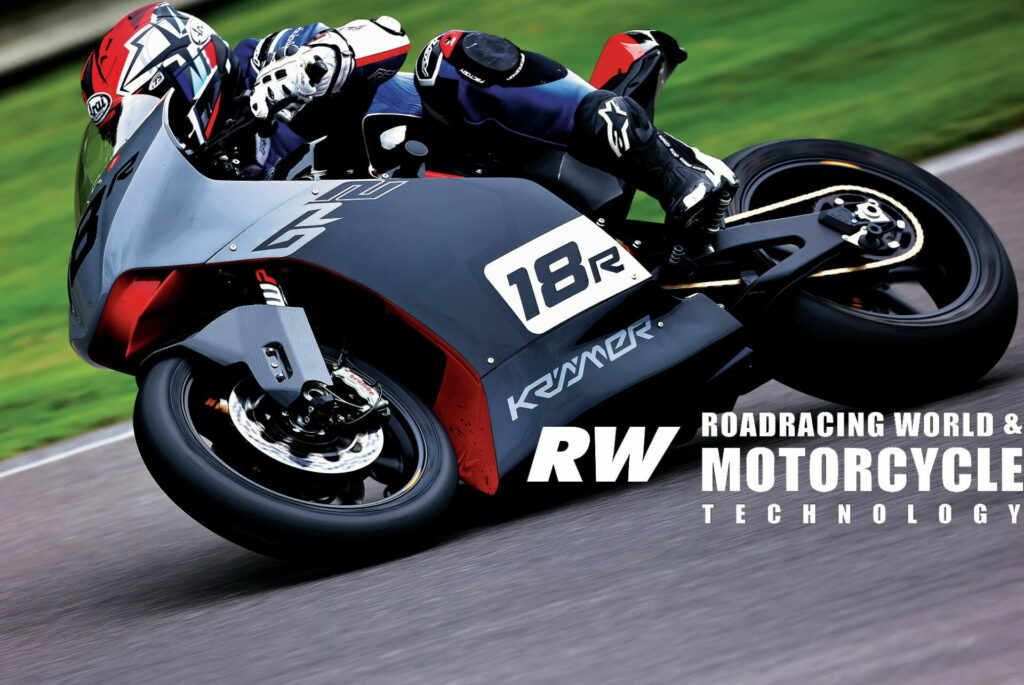
The performance numbers on the Kramer GP2-890RR look good; the RR puts out a claimed 138 bhp at 10,100 rpm with 74 lbs.-ft. (100 nm) of torque at 8,200 rpm and weighs in at 313 pounds (142 kg). That’s roughly 130 bhp at the rear wheel, which puts the power output in line with the latest National Series power limitation map used in Next Gen Supersport, and the SSP soft minimum weight limit is considerable higher at 375 pounds (170 kgs).
Looking at lap-time potential, Chris Fillmore’s best lap time on a GP2-890RR in the 4SR AHRMA Pro Challenge race at Barber was a 1:28.414, while Xavi Fores on a Next Gen Ducati V2 turned a 1:27.500 during the 2023 MotoAmerica Extended Supersport race at Barber. So, on-track performance is pretty close.
Roadracing World featured the Kramer’s specs in the Inside Info section of the September 2023 edition, but it never hurts to review a few things. The Kramer mates a custom chromoly steel trellis frame with KTM’s 899cc four-stroke Parallel Twin engine. The Kramer spec engine uses Pankl titanium rods, high-compression two-ring Pankl pistons, race spec camshafts, and titanium valves. A set of 48mm throttle bodies is also used, with Kramer 3D printed intake funnels. This is a cool feature for anybody who wants to test different intake tract lengths.
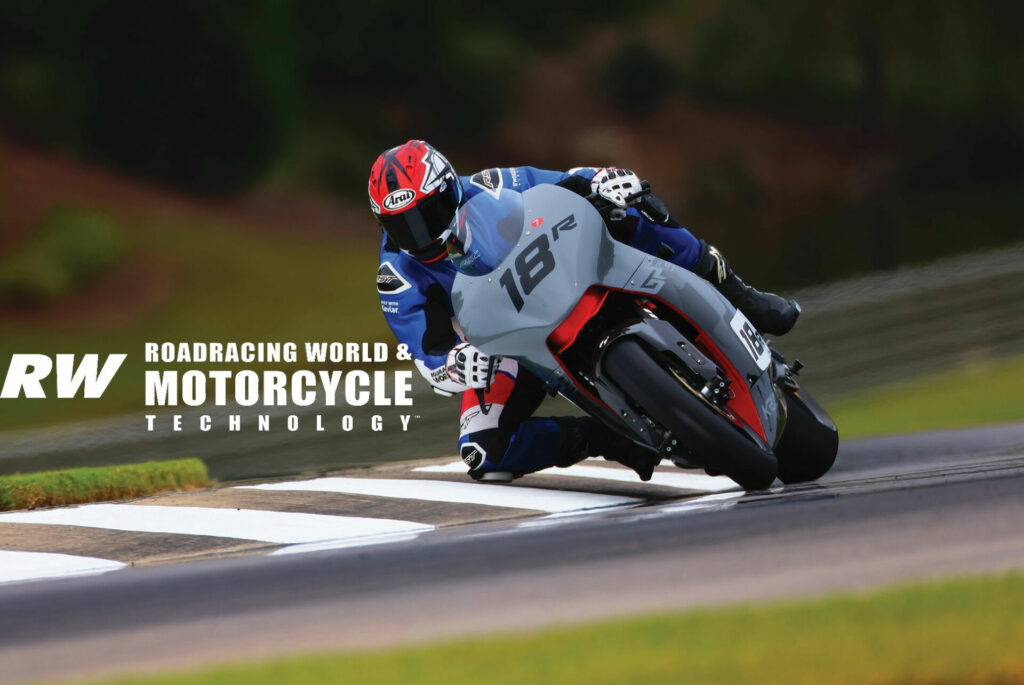
The electronic system uses a Mectronik MKE7 ECU that has an internal 6-axis IMU. The ECU unit is affordable and capable, with features like 10 levels of traction control (+3, 0, -4, and off) available through the left handlebar switch. The ECU uses inputs from the wheel speed sensors to detect slip, then removes power by retarding timing and cutting the ignition. Anti-wheelie is also wheel-speed-based. The GP2-890RR is also equipped with a pit-lane speed limiter. The Kramer has three pre-set riding modes, Dry with aggressive throttle; Dry with softer throttle maps; and Rain. There is no engine braking adjustment on the dash, although the MKE7 does have a feature that allows for engine brake trim. Hopefully that is a feature for future upgrades as it makes adjusting the engine braking simpler. Maps and strategies are adjustable though Mectronik’s Mecal software and Kramer plans to have cloud support where Kramer owners can crowdsource maps. This could be either good or bad, depending upon which wannabe geek has mucked around with the maps.
The Kramer features an AIM MXS 1.3 data-logging dashboard with pre-set logging channels that are all streamed over the CAN line from the MKE7 ECU. As delivered, the GP2-890RR logs 14 channels, including wheel speeds, throttle position, and suspension positions. Data can be downloaded wirelessly and analyzed using AIM’s Race Studio 3 software.
I met up with the Kramer brigade to ride the GP2-890RR during the Thursday practice day for the AHRMA Barber Vintage Festival. The two sessions I got were reasonably long and I was in the Pro Challenge group, so the traffic was light.
The GP2-899RR’s ergonomics have a racy feel; the bar angle is aggressive, but the seat-to-peg spacing is good and there is plenty of room to tuck in. The bike fit me pretty well; in fact I didn’t even have to the move the shift pedal for the test.
I worked hard on getting going pretty quickly; luckily, I have a ton of laps around Barber. The set-up on the bike I rode during the first session had been changed from the base setting. A stiffer 90nm rear spring was installed and the front forks were lowered in the triple clamps 3mm. These changes made the bike pitch over on the front in the braking zone and it was a little too unstable for my liking at the apex. It turned well and finished the corner; I just prefer a less aggressive front end.
I rode the standard setting during the second session, which raised the forks back to standard and had a 84nm rear spring on it. This setting was a little soft for me in the rear, but it improved braking stability; the bike wasn’t pitching over and I had feel from the front at the apex. Rear edge and drive grip was also improved. The biggest gain for me was how the front end worked. If I had another session I would have raised the front more and installed the stiffer rear spring to balance the bike. But the setting as the bike comes delivered worked well enough, and I could have ridden it all day.
The GP2-890RR engine has a broad and linear powerband, producing a deceptive amount of power from 6,000 rpm to the 11,500 rpm redline. As I found when I rode the 2021 RC 8C at Jerez, the 890 engine makes a deceptive amount of torque, so I liked running the GP2-890RR a gear higher than normal in each corner, and let the torque do the work. At Barber, the base gearing was a little tall for me to run third gear in some places–like Charlotte’s Web–but it was faster for me to lug the bike. The lightened rods, crank, and pistons help with acceleration, too. While running a gear higher let the bike roll through the middle of the corner and chug out for better acceleration, it hurt corner entry. The engine-braking force was too light in the higher rpm, so I was struggling to slow the bike down on corner entry. I’m sure using the rear brake would have helped, but I don’t know what that is. I adapted as the laps went on.
I did find myself turning down the traction control each lap during the sessions, eventually ending my second session on -3. Turning down the TC improved acceleration and didn’t have a negative effect on rear grip. The powerband is linear and the rear end has a lot of grip, so it’s hard to get in trouble on the throttle. I would have liked to try TC Off combined with the less aggressive throttle map if I had gotten another session. I think that would have been a good combination.
Overall Kramer has built a great package that can get around the racetrack and has plenty of adjustability to suit any rider. I’ve been writing about attainable performance a lot these days. And the Kramer model line-up sits at the top of the list of motorcycles that offer high performance that is attainable for most riders; add in its high-spec components and it has a bit of bling, too. The chassis can be pushed hard and there’s the right amount of power to balance the package. And it’s possible to ride the bike hard all day long without wearing yourself out mentally or physically! That’s a package worth $40,000!


